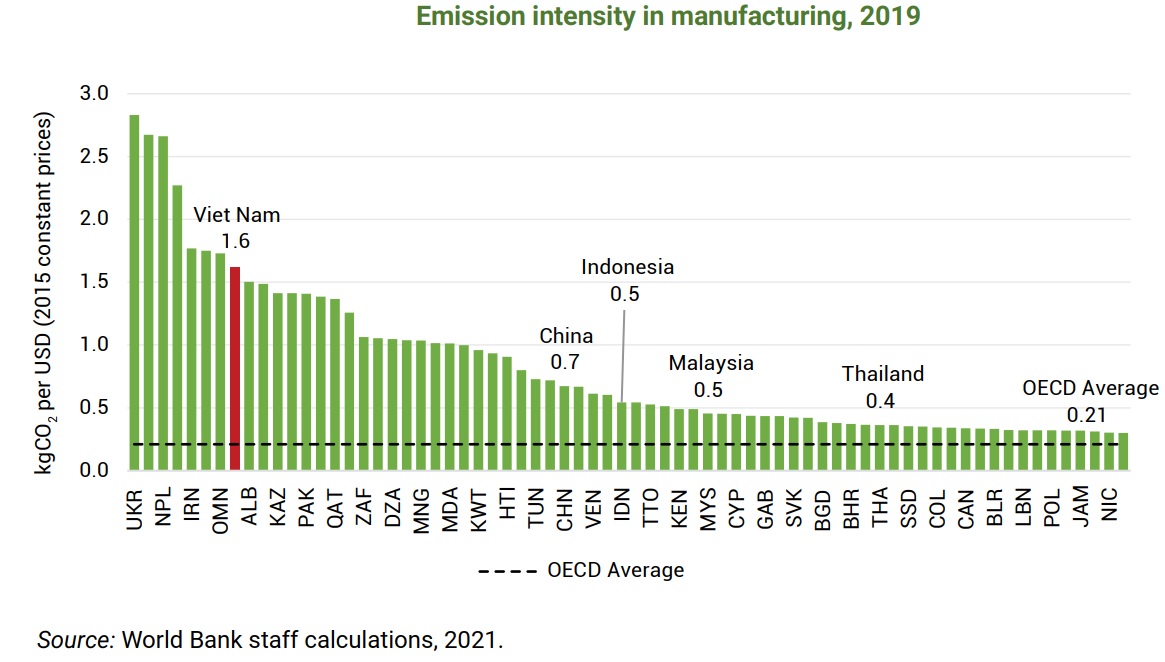How much does the trade sector contribute to carbon emissions in Vietnam?
The trade sector is a major source of carbon emissions in the economy and has a relatively large carbon footprint by international standards. These emissions are caused in part by the manufacture of exported goods and in part by the emission- and energy-intensive transportation services.

Agriculture is Vietnam’s second largest source of emissions after manufacturing, contributing about 33% of total greenhouse gas emissions in 2010.
Vietnam’s current comparative advantage in agricultural products is in emission- and energy-intensive sectors. Agriculture is Vietnam’s second largest source of emissions after manufacturing, contributing about 33% of total greenhouse gas emissions in 2010.
"Vietnam is also one of the largest producers and the second largest exporters of rice in the world. But the current method of rice production is also a major source of greenhouse gas emissions. Methane emitted from rice production in Vietnam accounts for more than 50% of the country’s agricultural emissions. Livestock production-related activities account for 32% of the total emissions from the agriculture sector", WB said.
On the other hand, while Vietnam ranks relatively high in emission intensity in manufacturing, analysis shows that the firm level direct GHG emissions are relatively small. Rather, the emissions are associated with indirect GHG emissions that come from the purchase of electricity, steam, heating, or cooling. In WB’s opinion, this means that there is little individual firms can do directly to reduce emissions; rather, it is measures to decarbonize power and heat generation that will have the greatest impact. However, Vietnam compares well with the rest of Asia in terms of the carbon dioxide (CO2) intensity of its electricity production, including when compared to Singapore, China, and Malaysia. This may be a reflection of the share of hydroelectrical power, as well as Vietnam’s increasing shift to renewable sources of energy, particularly solar power.

Also, while the ratio of exported emissions to emissions from total manufacturing production has risen, this appears to be due more to large export values than to an increased intensity of emissions in the production of exports. Emissions from production in Vietnam rose from 82 million tons to 173 million tons between 2005 and 2015, a much faster rate of growth than in other Association of Southeast Asian Nations (ASEAN) countries. The share of total emissions embodied in gross exports to total emissions from production increased from 60.9 percent in 2005 to 75.8 percent in 2015.52 This ratio was much higher in Vietnam than in other ASEAN countries.
"The emission content of total exports (intensity of CO2 emissions embodied in total gross exports) has fallen from 1.4 tons per US $1,000 in 2005 to 0.9 tons per US $1,000 in 2015. The efficiency of CO2 emissions embodied in total production, however, has increased from 0.7 tons per US $1,000 in 2005 to 1.1 tons per US $1,000 in 2015. The same pattern can be seen in imports (not reported here). This is in line with the findings in the previous paragraph that the rapid development of manufacturing and the type of manufacturing have led to increased GHG emissions”, WB said.










